Melvin Chew’s day starts early. While sleepy commuters pile into crowded trains and buses, headed toward Singapore’s downtown, he’s already at his stall in the country’s largest hawker center, prepping ingredients, braising ducks, and cooking rice.
“Everything is prepared here,” he says. “We still prepare our own garlic and shallots, and we also fry our own chili. We’re still the old-school type!”
Jin Ji Teochew Braised Duck & Kway Chap has been the family business for decades. Chew’s parents, who used to sell fruits on the street, were part of the early wave of hawkers who moved into established food centers in a government-led initiative to regulate street vendors and provide centralized, clean premises for businesses. They opened their duck rice stall in 1983—the same stall Chew is running today.
Singapore is a tiny country that’s big on food culture, and hawkers are central to this preoccupation. There are over 100 hawker centers—housing more than 6,000 cooked-food stalls—scattered across the island. The concept is simple: a no-frills self-service space with a range of offerings, providing diners with a wide selection at affordable prices. Hawker centers have long provided Singaporeans with quick and easy options; particular stalls garner fame for their cuisine. When the Michelin Guide came to Singapore in 2016, two hawker stalls were awarded Michelin stars.
Yet there are concerns over the future of the Singaporean hawker. The government has committed to building more hawker centers—Singapore is set to see 20 more by 2027. But according to a report by the state-convened Hawker Centre 3.0 Committee, the median age of hawkers in Singapore is 59 years old—an indication of an aging industry. As the current generation of hawkers retires, the question of whether young Singaporeans will take up the baton looms large.
“We can build many more hawker centers, but will we be able to get the hawkers?” asked then-Minister for the Environment and Water Resources Vivian Balakrishnan in 2013.
It’s no mystery why young Singaporeans might be reluctant to take up hawking. The profession requires long hours of hard work, in a non-air-conditioned environment in a country where daytime temperatures hover around 86 degrees Fahrenheit. It’s a far cry from the relative comfort of the climate-controlled office jobs that young Singaporeans often envision for themselves—or that their parents hope for them—at the end of more than a decade of schooling.
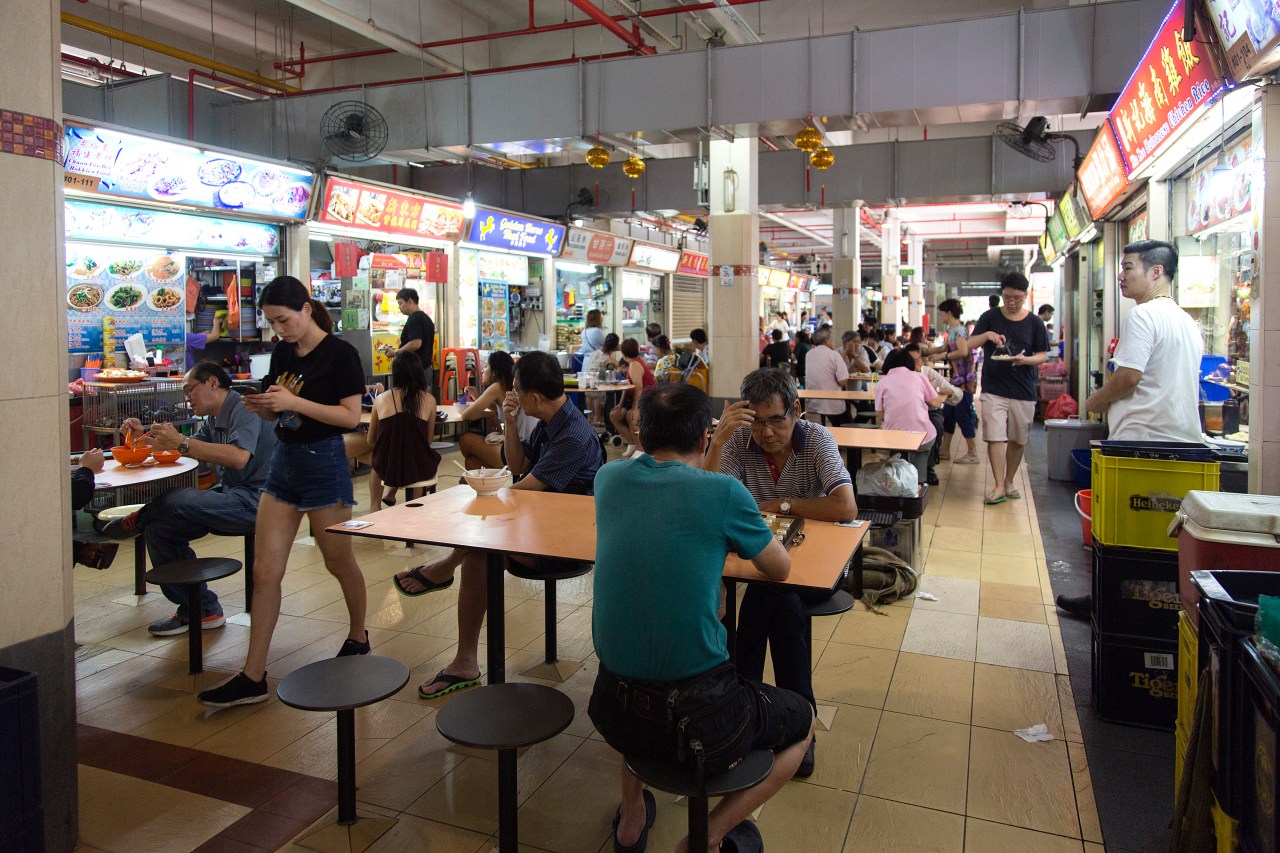
The Old Airport Road Food Centre, opened in the 1970s, is acknowledged by Singapore’s foodies to be an exceptionally good hawker center. But even in this hallowed home of legendary stalls, the question of succession is relevant.
Shy and unassuming, Tan Beng used to sell his wares in the streets as an unregulated street hawker. For the past 16 years, though, he has been a fixture at Old Airport Road, running Tan Beng Otah Delights with his wife Tee Ai Geok. Theirs is one of the last stalls in Singapore still making otah (spiced fish cakes wrapped in leaves) by hand instead of buying them from a supplier.
It’s a painstaking, tedious process: Ai Geok prepares her own otah mixture, then spoons it into narrow coconut leaves, wrapping them individually and securing them with a toothpick on either end. Beng grills them over a charcoal fire, expertly watching over dozens of sticks at once. Their day starts at about 7 a.m. every day; they shut the stall only when they’ve sold everything—Beng says they work at least 10 hours a day.
The couple has three children, all grown up with careers of their own. It’s unlikely that any of them will take over the stall when their parents decide to call it a day.
“There’s no one else, only us,” says Beng. “I’m not sure if we’re the last, but I don’t think there are others [making otah by hand]. When we retire, no one will be doing this anymore.”


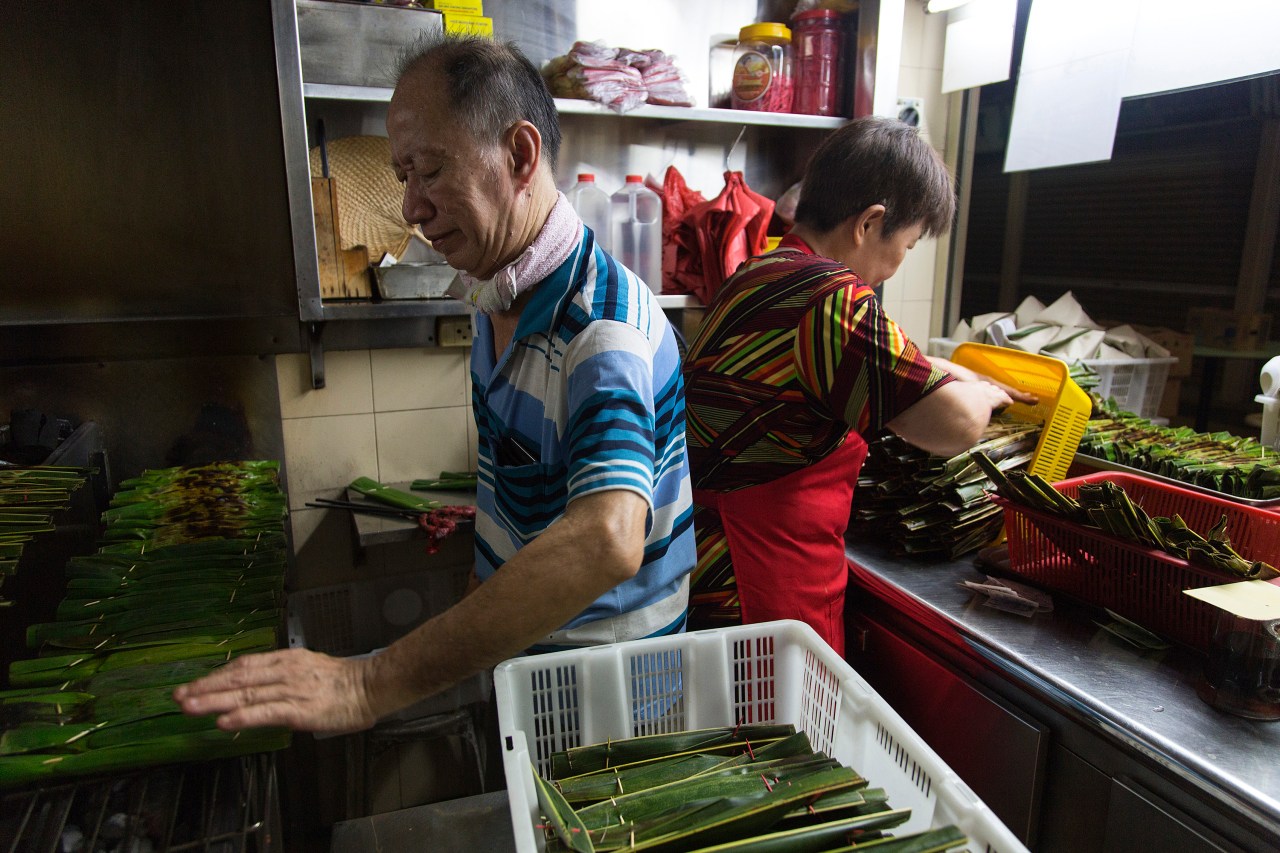
It’s a sentiment Chew’s familiar with. Although he was willing for a long time, his parents resisted the idea of his taking over their stall in the Chinatown Complex Food Centre. “They felt that hawking is very tough work and that youngsters should go and find office jobs and sit in the aircon,” he says.
Ultimately, it was family tragedy that brought the 39-year-old to the stall full time. His father passed away suddenly three years ago, and his mother wasn’t able to manage the business alone. Chew stepped in and took over.
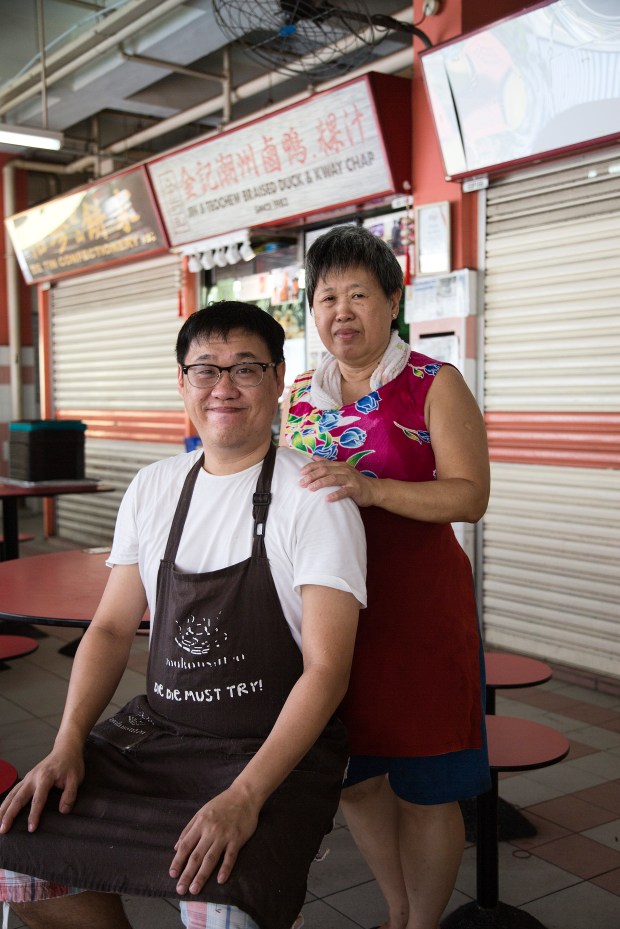
It’s arduous work—his hours are 7 a.m. to about 9 p.m., with only Fridays off—but he says he prefers this life to his previous jobs, in a car garage and at an employment agency for domestic workers. That preference is primarily due to his own passion for cooking, but Chew is also in a better position than other young Singaporeans who might want to venture into hawking. He enjoys the subsidized rental cost that his parents received as first-generation hawkers. Young Singaporeans who are just starting out now can’t benefit from the same advantage.
“Those new hawkers who go through [the bidding process for a stall], they will have a problem surviving. Because when you start a business, it takes time to let people recognize you. You have to do the marketing, you have to let people recognize you. All that time and marketing costs you,” Chew says.
Forty-one-year-old Ken Ng can tell you all about the challenges of being a newbie. Trained as an accountant, Ng used to work in a bank but threw in the towel so he could pursue his passion. Four months ago he opened Kemiri by Aroma Indah in Old Airport Road Food Centre, serving homemade Indonesian cuisine.
Rental costs in Singapore are high, but Ng says a hawker stall requires relatively less capital than any other food and beverage establishment, making it a good option for him to take his skills out for a spin and “test the market.”
His greatest challenge, though, is manpower. Under the regulations imposed by the National Environment Agency, hawkers like Ng and Chew can hire only Singaporeans or permanent residents as assistants. The restriction poses a challenge when the country’s food and beverage industry already faces a labor crunch. Because he hasn’t been able to hire any assistants, Ng has been dealing alone with purchasing, cooking, cleaning, and every other aspect of running his stall for the past three months.
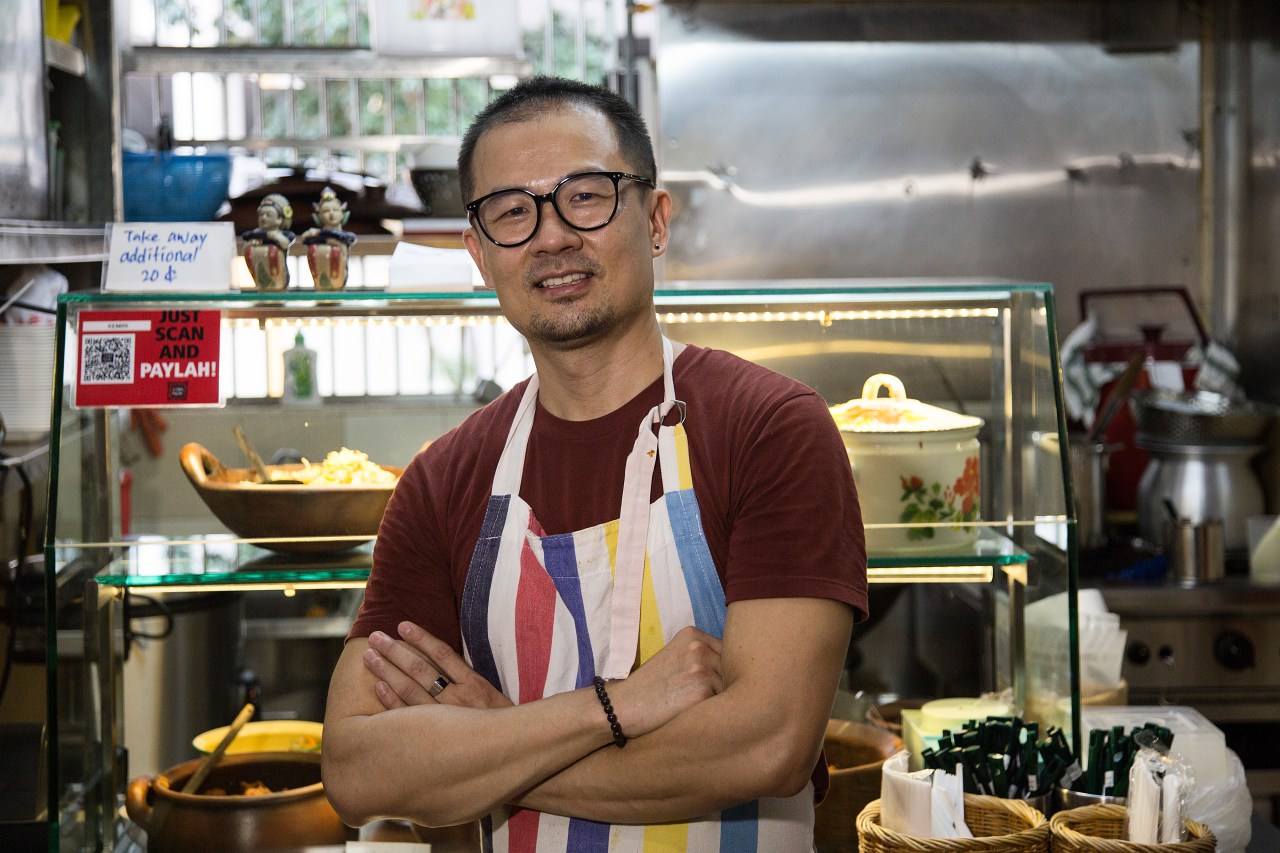
“I used to open for dinner, but I really noticed that my body cannot take it, so I just open until 3 p.m.,” he says. “I come here at 6 a.m., sometimes 7 a.m., then I work until 3 p.m. Then I have to close my shop.”
“Finding young people to work … I don’t think it’s easy,” he adds. “People prefer working in an aircon place like Koi [a popular chain that sells bubble tea]. You can find a lot of young people there. They find it more fun.”
That said, Chew doesn’t believe that there’s really a dearth of young Singaporeans entering the hawker trade. It’s their staying power that he questions. He points at the shuttered stall next to his and tells me it was opened (and closed) by a young man of about 30 years old.
“He started, and after three days he stopped. He said he wasn’t earning anything.”
The type of food that young hawkers choose to serve these days also has an impact on Singapore’s evolving food scene.
“There are actually a lot of people entering the hawker stream, but they are selling almost the same thing. They want to do simple food,” Chew says. “A lot of youngsters are doing Western food, Japanese food, Korean food … or, like, fish balls: Obviously, they won’t make their own fish ball. They’ll get them from a supplier.”
This wave of young hawkers might keep the hawker centers open, but Chew is concerned that more traditional but labor-intensive “old uncle” dishes might fall to the wayside. For instance, the kway chap (broad rice sheets served in a dark soy sauce broth with offal, braised duck, and bean curd) that he serves cannot be bought from wholesalers. One has to clean and prep the intestines by hand. Another example is char kway teow (thick rice noodles fried with dark soy sauce, shrimp, fish cakes, cockles, and vegetables), which requires long, muscle-aching hours in front of a wok.
“There is no shortcut. There is no machine which can help you fry char kway teow. Everything needs to be hands on, plate by plate. Imagine one day you have to cook 200 plates. Not a lot of people can adapt to this type of lifestyle,” he says. It’s his worry that one day such staples of hawker-center offerings might die out, leaving Singapore’s rich tapestry of gastronomic delights less vibrant and diverse.
For now, Chew hopes to keep growing his business and reach out to a more contemporary clientele by presenting his old uncle food in novel ways. Instead of just serving hard-boiled eggs with duck rice the traditional way, he offers up lava eggs and serves his duck rice as a bento set. He tells me that soon he’ll be opening a second stall, where he’ll serve duck rice in a Japanese donburi (rice bowl) style.
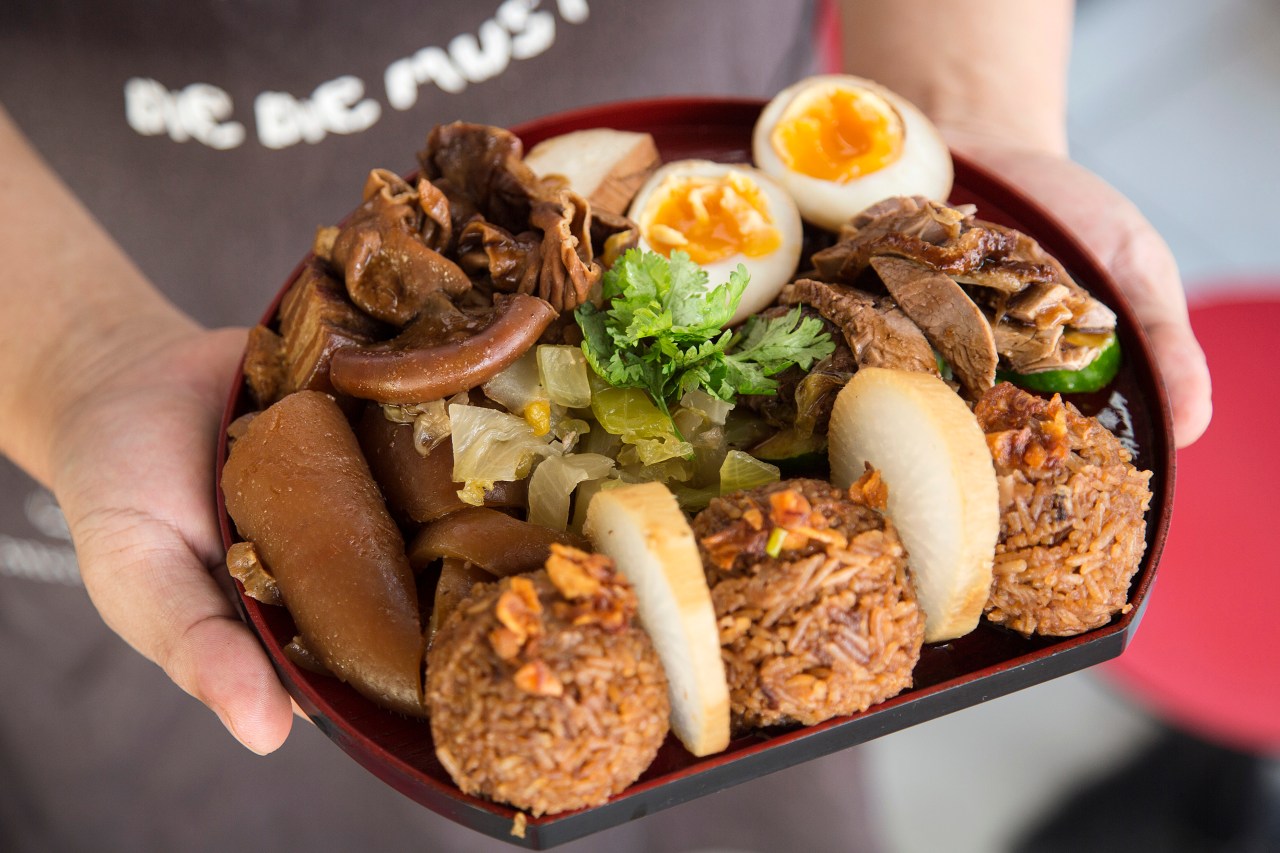
“It’s more Instagrammable,” he says with a shrug.
Across the island, Ng is struggling with his new path. “My mum worries so much about me because of this manpower thing. She can’t help much. My mum is from Indonesia. … She’s not Singaporean. And my friends said, ‘You sure you want this? No aircon and things like that? And you’re going to be stuck here, you know, at least few years to come?’”
Just weeks after he first spoke to “Explore Parts Unknown,” Ng decided to wind up his one-man operation at Old Airport Road Food Centre. He’s not giving up; he’s merely switching his focus to catering and online orders. But for Singapore’s hawker trade, that’s one more hopeful defeated by the challenge.